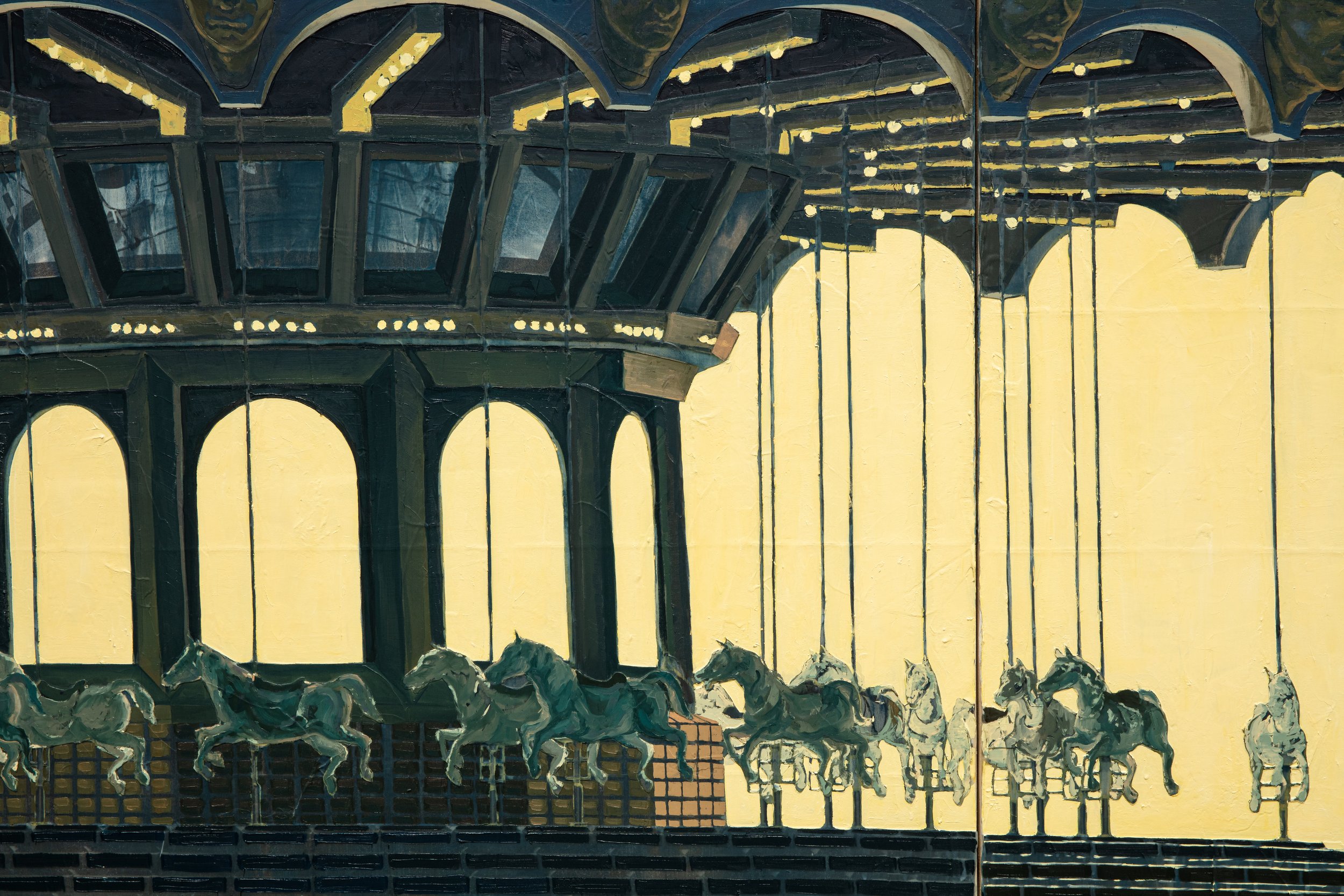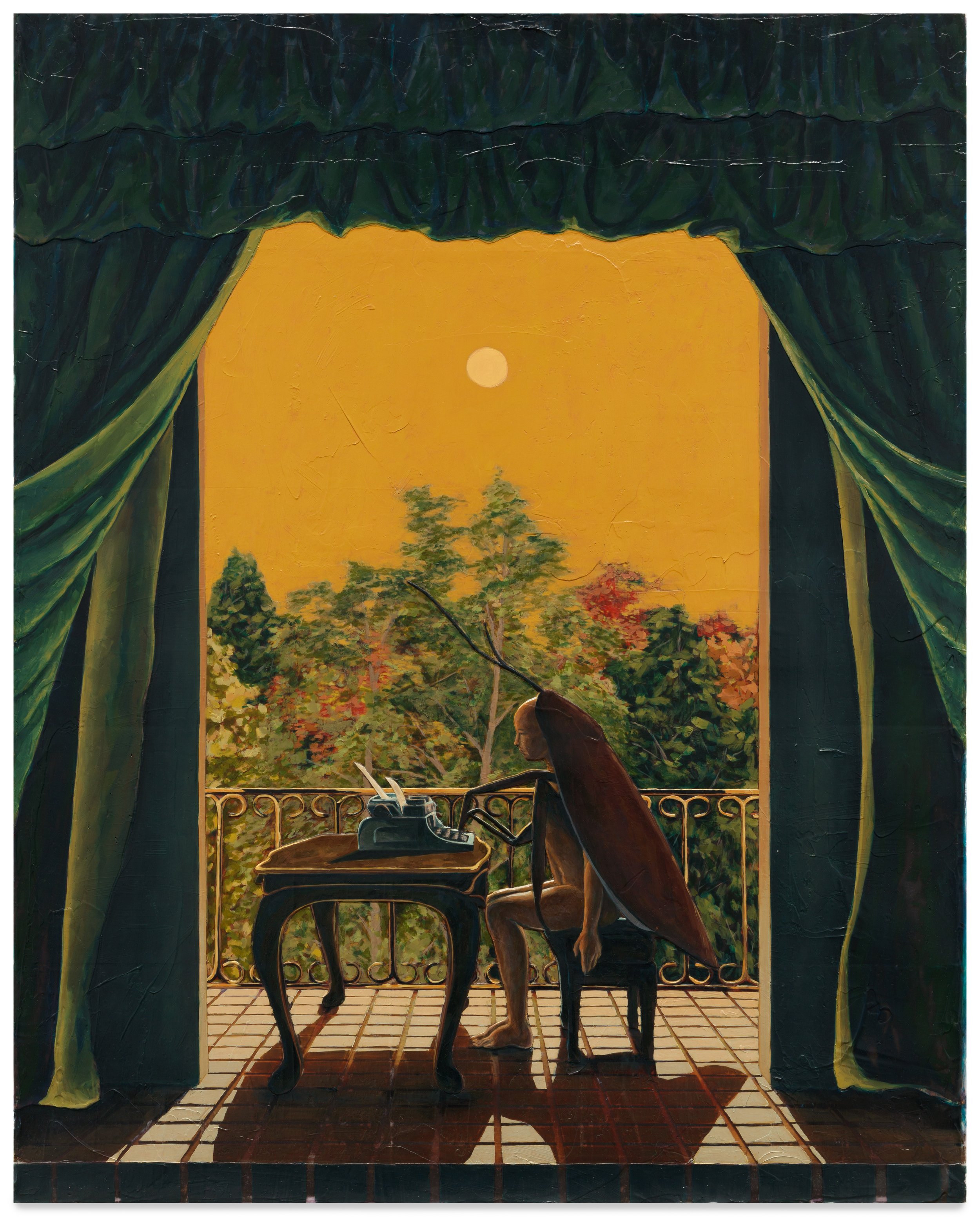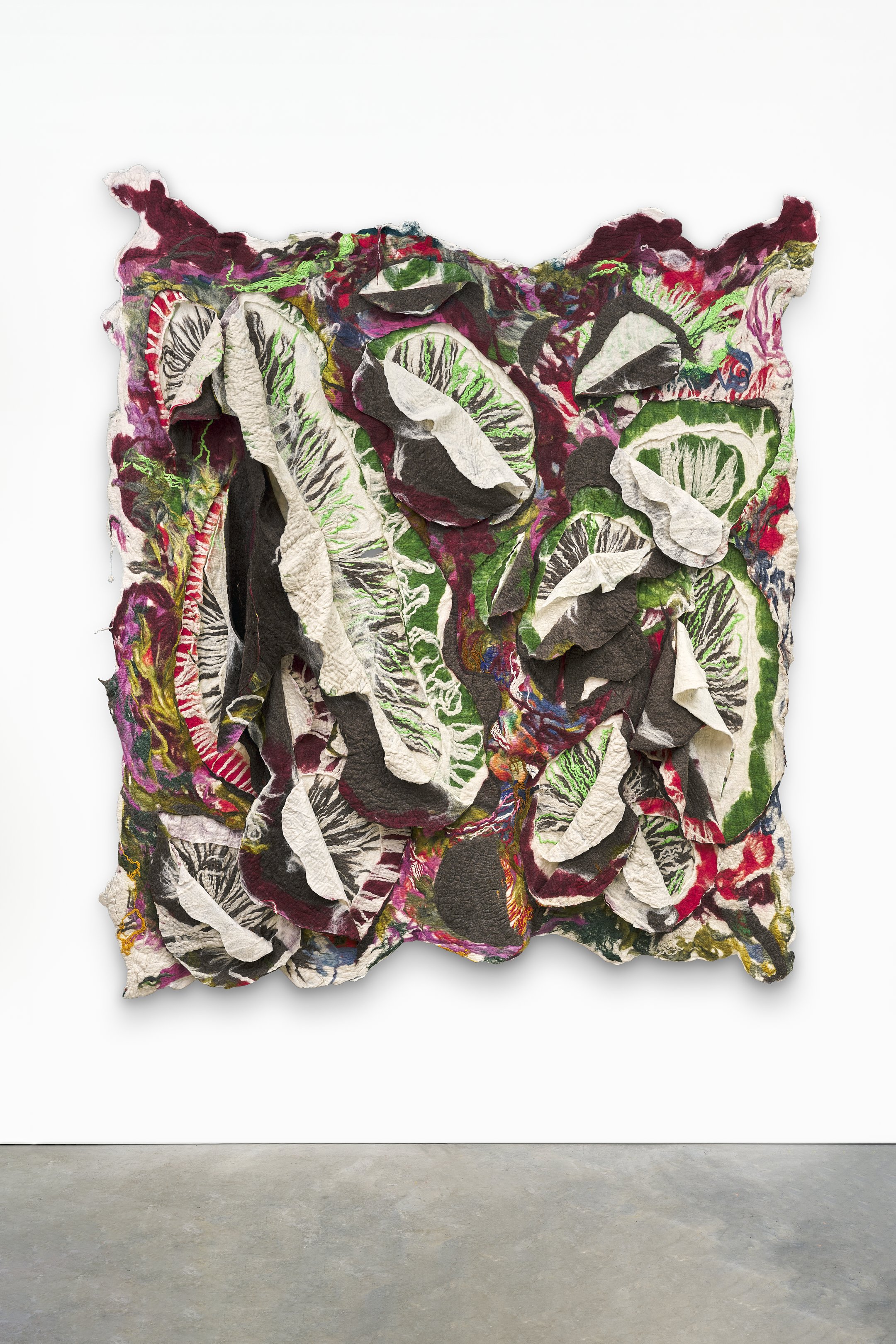April 2024: Meet the Artists
Ato Ribeiro, Ho Jae Kim and Sagarika Sundaram
This month’s residency is generously sponsored in part by Shepard Broad Foundation and Don Savelson and Jane Wesman.
Ato Ribeiro
The interests behind Ato Ribeiro’s creative practice stem from an urge to bridge his West African heritage with his African American Identity. This research mines and honors a variety of shared and neglected histories in order to visually speak to a contemporary sense of cultural hybridity. By employing familiar practices— of collecting, joining, and refining natural and repurposed materials— his wooden kente quilt works, mixed-media installations and prints provide educational opportunities to seek out new points of reference, while preserving layers of African cultural heritage and varying ethnic perspectives. Through the use of discarded materials, the query of his work is in part a look into torturous separation—of peoples, of fact from accounts—and rectification through remembrance. What to some should be avoided or deemed ahistorical, for others presents the most befitting opportunity for healing, rebuilding, and fostering optimistic growth. They are the results of a process aiming to preserve invaluable communities and explore alternate methods of making home.
Ato’s work has been exhibited in numerous galleries in Arizona, Georgia, and New York; he is currently based in Atlanta.
Ho Jae Kim
The fascinating and sensitive paintings of Ho Jae Kim work on a number of philosophic, creative, and technical levels. The Korean-born and New York-based artist has an intriguing process that involves drafting his images on a 3D modeling program. This initial step is a homage to the artist, Piero della Francesca of the Early Italian Renaissance, which allows Kim a degree of precision where he can achieve heightened levels of geometric and compositional accuracy. Despite this mathematical exactitude, the creative process and resulting images retain “a mystery that is not quantifiable.” These 3D models are finalized and then printed on an inkjet printer in multiple layers, which are later transferred onto his painting surfaces using inkjet transfer techniques. Layers of overlapping transfers mimic the process of glazing.
Ultimately, the transferred images are used as underpaintings in a similar way that ‘cartoons’ (fully realized under-drawings) were traditionally used in frescos. Thematically, Kim’s works explore transformation, the mundanity of contemporary life, and the idea of purgatory, in as much as our everyday lives have a sense of liminal suspension between quotidian moments, between birth and death; and are often rendered with muted palettes to reflect this more realistic rendering of reality versus the lurid color schemes of cinema, television, and social media. Most recently, he has participated in exhibitions at Harper’s, New York, Los Angeles, and East Hampton; Hive Center for Contemporary Arts, Beijing; Songwon Art Center, Seoul; Canal Projects, New York; Nicodim Gallery, Los Angeles; and Make Room, Los Angeles.
Sagarika Sundaram
At the heart of Sagarika Sundaram's work is an attention to the creative principle. Concentric rings, spirals, a hybrid flower-womb-maw recur as abstract, sculptural gestures, recalling botany but also human biology, offering multivalent interpretations around birth, growth, and nonlinear notions of time. Folds of fabric are cut open like a fleshy membrane, a wound, revealing a form hidden within a form. Drawing extensively on natural imagery, the work meditates on the impossibility of separating the human from the natural and the interior from the exterior, suggesting the intertwined nature of reality.
Wall-based, free-standing and installation works made from raw, hand-dyed fiber unite a painter’s sense of color, a sculptor’s perception of space, and a dancer’s feeling for movement. Wools and dyes from as far as the Himalayas and as near as the Hudson Valley form the raw materials drive their construction. The scale of the work, as it climbs from floors to walls and into the air, discloses the intense investment of labor that goes into its making, using ancient felt-making techniques, harkening back to the early days when such work was wrought entirely by hand.
This collision of worlds—between the local and global, the ancient and modern, and the human and natural—speaks to Sundaram's heritage, growing up between India and Dubai, and to the harmonious marriage of labor, materials, and form that underlie thousands of years of textile tradition. Sundaram is a recipient of The Hopper Prize and a Bronx Museum AIM Fellowship.















